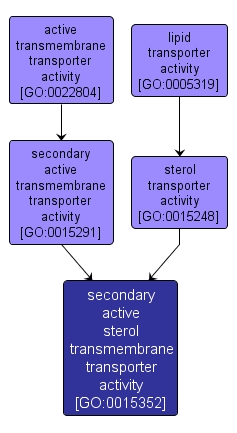GO TERM SUMMARY
|
| Name: |
secondary active sterol transmembrane transporter activity |
| Acc: |
GO:0015352 |
| Aspect: |
Molecular Function |
| Desc: |
Catalysis of the transfer of sterol from one side of the membrane to the other, up the solute's concentration gradient. The transporter binds the solute and undergoes a series of conformational changes. Transport works equally well in either direction. |
| Synonyms:
|
|

|
INTERACTIVE GO GRAPH
|














